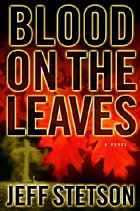 Somebody’s killing white men. But not just any white men. These are men who 40 years ago were accused of killing a black person. Yet though accused under the weight of overwhelming evidence, these white men were never punished or even found guilty. Now in Mississippi where the original racial murders occurred, 40 years later, one after another these white men are being killed. And these white men are not just being murdered. No. They are being killed in precisely the same manner as was the black person they are accused of killing. If the black person was lynched, the white man is found lynched. If the black person was strangled with barbed wire, the white man is found strangled with barbed wire. No doubt then, the killings are acts of vengeance. But whose vengeance is it?
Somebody’s killing white men. But not just any white men. These are men who 40 years ago were accused of killing a black person. Yet though accused under the weight of overwhelming evidence, these white men were never punished or even found guilty. Now in Mississippi where the original racial murders occurred, 40 years later, one after another these white men are being killed. And these white men are not just being murdered. No. They are being killed in precisely the same manner as was the black person they are accused of killing. If the black person was lynched, the white man is found lynched. If the black person was strangled with barbed wire, the white man is found strangled with barbed wire. No doubt then, the killings are acts of vengeance. But whose vengeance is it?
That is the mystery at the center of Jeff Stetson’s novel Blood on the Leaves (Warner Books). As the racial and historical pattern of the murders becomes clear, a history professor at the local college, a black man, Martin Matheson, becomes the prime suspect. Matheson, you see, has been teaching a course on the cases where whites killed blacks and were never punished. With the actual case documents and, or newspaper accounts of the Mississippi race murders, Matheson has compiled a list of the names of the white men, and their crimes, and their current whereabouts. He lectures on these crimes and encourages his students to visit the homes of these now old men, and put up signs and posters indicating their past crimes. Is Matheson, or one of his students, the seeker of vengeance?
Eventually, Matheson is arrested for one of the murders. James Reynolds, a Deputy District Attorney for the county, and also a black man, is assigned the job of prosecuting the case. Also thrown into this mix is Todd Miller, a white lawyer, who used his legal skills to defend African Americans during the height of the civil rights movement, and who to this day believes in the Martin Luther King Jr.’s vision for American society. Miller becomes the lawyer for Matheson, the history professor.
In one of the early scenes, it is Miller who wonders how much racial progress has really been made. When he is witness to one of the murders, by way of a car bombing, Miller sees some of Matheson’s students standing around:
“Miller saw a group of students gleefully staring at the conflagration. He half expected them to exchange high fives or other congratulatory celebrations. Had it come to this? he wondered. Had the legacy of hate finally made a complete circle and confined everyone within it?… The vast majority [of the students] were entertained, enthralled by the excitement of witnessing an old man’s body being reduced to ash.â€
That is one of the themes in this book that makes this a moral novel. Another theme comes from Matheson, the history professor. He is eloquent in his understanding of how someone might feel justified in committing the murders. At one point, to a TV interviewer Matheson says,
“When this country was attacked on its own soil, no one suggested we should turn the other cheek. We didn’t seek to understand our enemies in order to love and forgive them. We branded them evil cowards and then did everything in our power to destroy them. Is there any greater evil than bombing a church and killing innocent little girls engaged in prayer? Are there any more despicable and cowardly terrorists than those who conceal their faces beneath white hoods while they lynch black men and women?â€
Matheson is also eloquent in his defense of what he teaches and how he motivates his students to think about American history, when he says,
“History devoid of analysis and truth ceases to be history and instead becomes propaganda and myth, both of which are drugs far more powerful and dangerous than any narcotic or hallucinogen.â€
Well written, a good mystery, morally disturbing, this is a novel to be reckoned with. Is there any such thing as righteous hatred? What might hatred cost the children of those treated unjustly? The story- the issues- the questions- raised in the novel are troubling and relevant. Just this month, the State of Mississippi arrested the man believed to have organized the infamous killing of the three freedom riders, Chaney, Goodman, and Schwerner, in 1964. That man, Edgar Ray Killen, had always been believed to have organized the murders, but had never been prosecuted for murder. In his novel, Jeff Stetson asks Americans to remember that legacy, the blood on the leaves, and to consider questions of vengeance versus justice.

